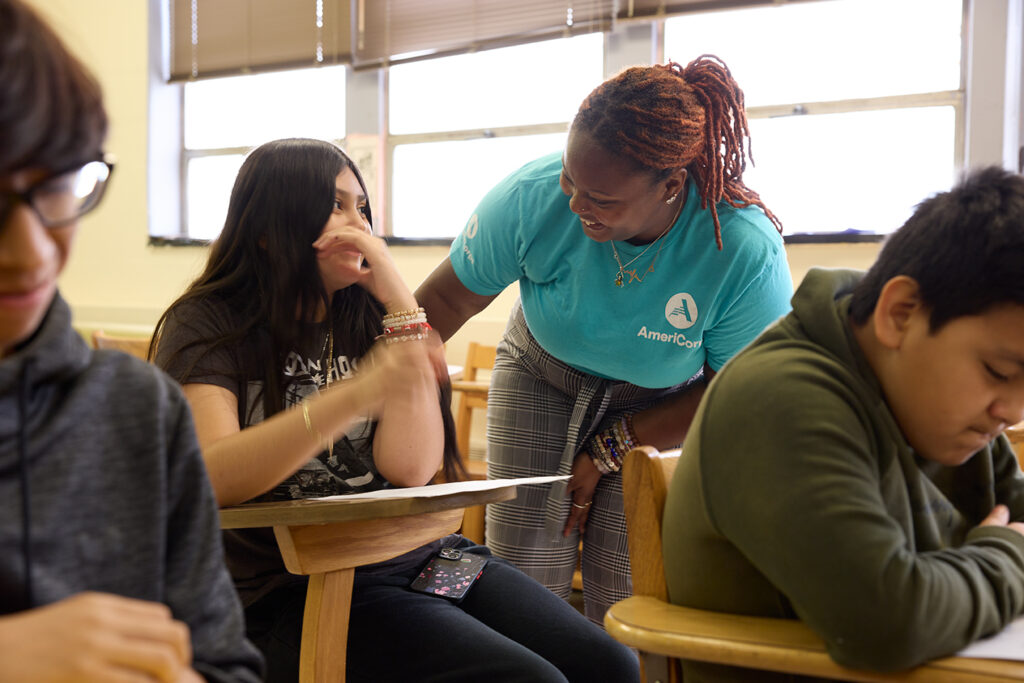
Credit: AmeriCorps Photos
In the spring of 2020, teachers and administrators managed to re-create school in a home setting in days. It was a Herculean accomplishment that received little praise or recognition. Now, with millions of California students back in school, we are confronting another set of challenges. Many students are struggling academically, psychologically and emotionally, and many teachers and administrators are overwhelmed by the new challenges they face.
Thanks to substantial federal and state funding, our schools are operational again, but the needs persist. We now know that even as we continue rebuilding our education system, we must find ways to address the significant academic and mental health needs of our young people while simultaneously providing educators with the support they need to perform their jobs.
To respond effectively to current challenges, schools in California are in dire need of two valuable resources working in tandem: highly qualified teachers and additional support staff in classrooms. The California Service Corps programs consist of #CaliforniaForAll College Corps, #CaliforniaForAll Youth Jobs Corps, California Climate Action Corps, and AmeriCorps California, including California’s Student Success Coach Learning Network. All together, these programs may be part of the solution to both needs. Together, the programs have recruited thousands of talented and committed individuals who are actively working to provide support to teachers, administrators, and most importantly, our students.
California Service Corps members, including the Student Success Coach Learning Network, provide much-needed resources to vulnerable school communities throughout California. The network was created through funding provided by Gov. Gavin Newsom and the state Legislature in 2022.
Service programs are just one of many solutions needed to address the challenges to our education system, and they have been proven to be effective. These programs improve conditions in schools by providing trained, near-peer coaches (often just a few years older than the students) to California’s school communities to mentor some of our hardest-to-reach students.
Working collaboratively with teachers and administrators, service members are embedded within schools and serve thousands of students across the state. Working closely with teachers and counselors, they help improve academic outcomes, provide critically needed social support to kids, and increase teacher retention by reducing burnout.
Our school communities urgently need this support to continue. California has already established dedicated support for and investment in education-focused service programs. As we move through our third academic year of the “new normal,” we must recommit ourselves to supporting programs that uplift our students and drive teacher success and retention.
In the past three years, we have learned invaluable lessons about the role of service programs in addressing the pandemic’s impact on learning loss and student wellness.
Service members are trusted mentors, tutors and role models for students. They welcome students when they arrive at school, make calls home to check on their well-being, provide one-on-one and small-group interventions to those who need extra support, and facilitate afterschool programs.
In rural communities, these additional coaches are critical, as teachers and administrators are often asked to do more with less. By partnering with school staff to provide vital academic, social, and emotional support, service members improve the conditions in school communities so that teachers can focus on teaching.
Additionally, these service programs offer young adults a valuable introduction to careers in education and are creating a much-needed pipeline into the teaching profession and educational careers. These educators are more diverse than the national teaching force overall and tend to stay in the profession longer than the national average. Equally important, they come into schools prepared for the joys and challenges of the profession, trained in holistic student-centered support, and committed to expanding educational equity.
Like California, we need state and federal leaders to continue investing in education-focused service programs as a permanent part of our education and workforce development infrastructure so we can continue recovering from the catastrophic effects of the March 2020 school closures.
Three years later, we have learned so much. We cannot afford to go back.
•••
Josh Fryday is the Chief Service Officer of California, serving in Gov. Gavin Newsom’s cabinet, and Pedro Noguera is the Dean of the USC Rossier School of Education.
The opinions in this commentary are those of the authors. If you would like to submit a commentary, please review our guidelines and contact us.

دیدگاهتان را بنویسید